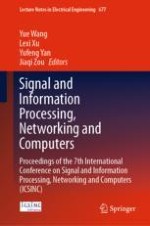2021 | Book
Signal and Information Processing, Networking and Computers
Proceedings of the 7th International Conference on Signal and Information Processing, Networking and Computers (ICSINC)
Editors: Dr. Yue Wang, Dr. Lexi Xu, Yufeng Yan, Jiaqi Zou
Publisher: Springer Singapore
Book Series : Lecture Notes in Electrical Engineering
